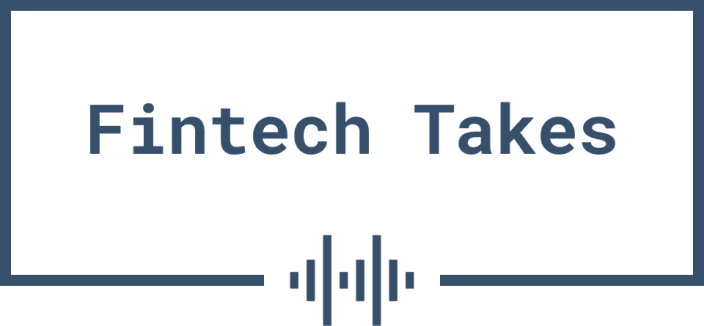
3 BIG IDEAS FROM THE PODCAST
This week’s guest is Martin Kleinbard; Founder of Granular Fintech, ex-CFPB staffer, and author of one of the most interesting research reports I’ve read in ages, How Cash Flow Data Can Diffuse the Credit Score Time Bomb.
So interesting, in fact, that we decided to publish it through the Fintech Takes Network — and whether or not you’re a member, you can read it here.
In this episode, Martin and I unpack the origin story of the FICO score and how its use (and overuse) has evolved over the last 35+ years.
Plus, Martin makes a surprisingly pragmatic case for why cash flow data just might be the thing that brings the consumer lending ecosystem back into balance.
And read on below for my three big ideas …
1. FICO Was a Tool … Then It Became the Tool
The FICO Score wasn’t meant to be a singular moral compass for credit. The version that we know today was introduced in 1989, with the narrow goal of giving lenders an efficient and objective way to assess a borrower’s willingness to repay a loan.
It did that job extremely well … too well, in fact.
Between 1995 and 2007, consumer lenders, regulators, and consumers started treating the score as gospel. Consumers with strong scores got approved for mortgages they couldn’t afford. Lenders followed the number, consumers trusted the number, and regulators blessed the number.
But FICO was never built to measure ability to pay, which, it turns out, is a pretty important component of loan underwriting, especially when there are changes in the macro environment that may impact consumers’ personal economic situations (as we saw in 2007/2008).
Like many things in life, the limitations of FICO weren’t apparent until they were. FICO was, in many ways, a victim of its own success, and society learned a valuable lesson about the perils of trusting any one model too much.
| 🎬 DIRECTOR’S COMMENTARY Martin’s report has some INCREDIBLE details and anecdotes about the history of the FICO Score, which I was not aware of, despite having worked at FICO. It’s fascinating to look back on the 1990s and early 2000s, with the benefit of hindsight, and consider how FICO climbed to the heights it is at today. |
2. Score Inflation (When Everyone’s a 760, No One Is)
If the 2000s were defined by a housing bubble, today we’re staring down a new one: a trust bubble.
Consumers are now trained to treat FICO like a game. Credit builder products, TikTok hacks, and YouTube personal finance influencers have turned credit optimization into a full-blown genre. Even Credit Karma’s founder mused publicly about a future where an AI bot could automatically maximize your score with the click of a button.
The problem is that the button won’t raise your actual creditworthiness or change the underlying risks of lending to you. All it does is make the credit bureaus’ data less reliable.
And behind the scenes, lenders are noticing. They’re adjusting their internal models, downgrading inflated 720s back down to 680s. Consumers, meanwhile, are confused and angry — they followed the script, optimized their scores, and are still getting denied or overcharged.
Cue the trust spiral: AI keeps optimizing, consumers game the system, lenders lose faith in the score, and borrowers lose faith in the system. Rinse, repeat.
What helps one consumer (an inflated score) undermines the entire system.
Lenders stop trusting the signal. Consumers stop trusting the lenders. And loans become less accessible and more expensive.
3. The Most Human Form of Underwriting We Have
This is where cash flow data comes in, not just as a better signal, but as a pressure release valve for a system on the brink of a breakdown.
Cash flow data sees the now. It captures how consumers actually live (income variability, recurring expenses, spikes, shortfalls). It’s harder to fake, easier to contextualize, and a helluva lot more intuitive, as a signal of creditworthiness, to humans.
It also performs a kind of sanity check that sees what the credit score misses (and in a world where synthetic identities and AI-generated applications are on the rise, that ground-level truth matters).
Regulated open banking may be getting rolled back in the U.S., but the momentum cash flow underwriting has gained over the last five years is only getting stronger.
It’s coming at the perfect time.
WHAT I’M LISTENING TO
#1: Walmart and Amazon explore stablecoins, and has Chime’s IPO set a new benchmark for fintechs? (Fintech Insider) 🎧
I was honored to make a guest appearance on this podcast, where we talk about Chime becoming a public company, Amazon and Walmart kicking the tires on stablecoins, and a whole bunch of other topics.
I had a lot of fun on this one!
#2: A Backdoor Way to Merge Bank Regulators? (Banking with Interest)🎧
Rob Blackwell + Todd Phillips = lots of nerdy bank regulatory talk. One of my favorite things!
WHERE I’LL BE
✈️ Mr. Johnson Goes to Washington | July 14-16 | Washington, D.C.
I am planning to be in D.C. in July for a few days (looking forward to the heat and humidity!) The theme of my visit will be financial inclusion, but I’m game to geek out on whatever topics tickle your fancy if you’d like to grab coffee or a beer.
💻 Fintech Open House — July Edition | July 16 | Zoom
Digital wallet wars. Embedded everything. BaaS growing pains. We’re unpacking the big shifts in our Fintech Takes Open House, open to all. Register to join.


